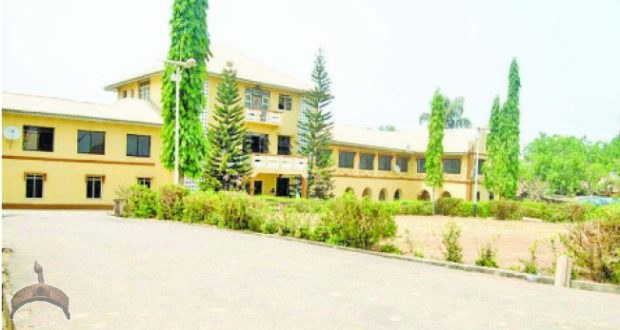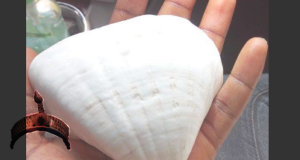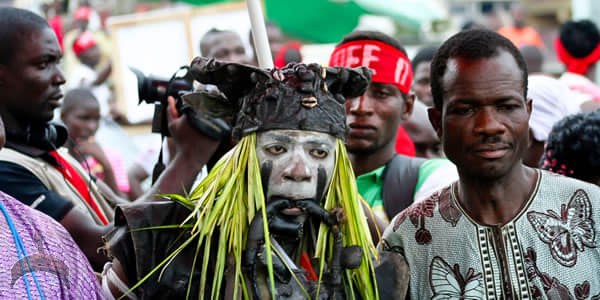• The 1,000-year royal castle sits upon 180 acres, has 1,000 inner rooms, museum, market, others
Bamigbola Gbolagunte, Akure
Historians have adjudged the palace of the Olowo of Owo in Owo Local Government Area of Ondo State as the “biggest palace in
Africa” going by historical facts and research. The palace built almost 1,000 years ago is a place to behold for those who value tradition and culture. It houses artifacts and ancient facilities many of which are now monuments contained in the museum located within the palace.
No fewer than 13 traditional rulers from the first Olowo of Owo, Oba Ojugbelu Arere, have occupied the palace. They included Rerengejen, Elewuokun, Ajaka, Ajagbusi Ekun, Olagbegi Atanneye I, Olagbegi Atanneye II, Ajike Ogunoye, Olateru Olagbegi I, Olateru Olagbegi II, Adekola Ogunoye II and Folagbade Olateru Olagbegi III, who joined his ancestors in April.
Located in the heart of the town and surrounded by trees and some other artifacts, the palace contains 1000 inner courts, 20 antes and many others with the central market.
An historian, Olusola Olutayo, disclosed: “Owo has the largest palace in Africa, which was declared a national monument by the Federal Government in 2000. Each courtyard has a specific function and was dedicated to a particular deity. The largest, said to have been twice the size of an American football field, was used for public assemblies and festivals.
Some courtyards are paved with quartz pebbles or broken pottery. Pillars supporting the veranda roofs were carved with statues of the king mounted on a horse or shown with his senior wife.”
Today, the palace stands as both a cultural and historical testament of a rich and diverse part of the people of Owo. The town has produced giants in politics, industry, commerce and education including Governor Rotimi Akeredolu. It came to being at about the closing of the 10th century and its 1,000 years of existence would be celebrated later in the year.
The palace built in 1340 during the reign of Olowo Irengenje. He moved the palace from the Ojuti Asegbo to its present site. Its 1,000 rooms and courtyards are known as Ugha while some of the courtrooms served as shrines and places of worship of ancestors. This could be the reason the National Museum Centre is situated within the palace.
The Olubola of Owo, Chief Olusola Ogunleye, said the palace, which sits on a 180-acre of land, plays a significant role despite the existence of a new one: “Olowo is the principal occupant of the palace called Aghofen.”
A palace chief who is also the Owamodu of Owo, Chief Tola Owatowose, said the palace symbolises the integrity of Owo Kingdom: “Some people voluntarily carry out the maintenance of the palace to show their allegiance and respect to the king and the kingdom. Most of the courtyards had collapsed or caved in but 17 of them are still in existence. Some of the courtyards include the Ugha Moron, where past Olowos were buried.
“The courtyard is set aside for the worship of our ancestors and kings. Olowo visits the courtyard once in a year during the celebration of new kolanuts. Women are not allowed in the yard except the queen.
“One of the largest courtyards is known as Ugha Okonren. This courtyard is specially designed for men and it is used for the gathering of male folks. Next to the men’s courtyard is the Ugha Ehin Ode where every chief has his allotted seat according to their hierarchy, in descending order of importance. The Olowo occupies the central seat.
“Some of the courtyards are exclusively reserved for the king’s use including Ugha Akomaduse. Here, the king is expected to relax and hold interactive sessions with his chiefs. It was a place where the chiefs are expected to pay homage to the king in the morning. The place where the king lived was known as Ugha Gwakun. Inside this yard existed Odo Uli courtyard where the king has his meal, while he has his bath at Ugha Agwe courtyard. The Ifa oracle is consulted on behalf of the king at this courtyard too.
“The Olowo uses some of these places till date. For instance, the Olowo visits the courtyard to dress and undress for the annual Ighogho festival. Not all chiefs are, however, allowed to enter some of these courtyards. The wives of the king also have special courtyards within the palace and these places are out of bound for men except the Olowo. Ugha Oluwabunmile and Ugha Yeyeluwa are particularly reserved for the head queen.
“Other courtyards of the queens include Ugha Tere, Ugha Gbedu and Ugha Okelade. Food and gift items are shared in these courtyards. The palace also has a special courtyard for preserving food items for the use of the palace. It is known as Ugha Ogba. Foodstuffs presented by the people to the king are preserved in this barn.
“At the palace, there are different sizes of drinking cups known as Agho. The type of cup depends on the grade or the hierarchy of the chiefs and this is only done during festivals. The Olowo also has a chariot he uses to move round the town during special festivals.
“Relatives of the king and his wives live in the palace. Princes and princesses are not allowed to live in the palace during their youthful days. When married, they could be moved out of the palace. Male servants who live within the palace are castrated. The head servant if not castrated lives outside the palace wall but must be at the palace before cock crows and the last to leave the palace.
“The palace experienced some decay after the deposition of Oba Olateru Olagbegi II, who was removed by government and banished to Okitipupa.” He listed some features noticeable at the old palace before he was deposed to include lawn tennis court, fishpond with golden fishes.
He, however, said some parts of the 180-acre land have been given out for development: “Government Primary School besides the palace and the new mega school are parts of the palace.”
One of the senior Omo Olowos, Chief Jamiu Ekungba: “Let a new Olowo of Owo emerge so that we can take you round the palace. As it is now, we cannot take you round the palace since there is no Olowo in place. By the time we get a new traditional ruler, we will take you round the palace and you will see things by your self. Our palace is the largest in the whole of Africa.”
An indigene, Richard Olabode, stressed the need to preserve the old palace: “Monuments are vital parts of any country; preserving them is the duty of government. This can be achieved by establishing a synergy with the people these are places, which remind us of our ancestors.
“Owo Palace is one of the historical places in Africa as it remains the largest in the whole of Africa. Government needs to shift attention to this place as it stands to bring more money to the coffers of government as one of the tourist centres.”
 Ọmọ Oòduà Naija Gist | News From Nigeria | Entertainment gist Nigeria|Networking|News.. Visit for Nigeria breaking news , Nigerian Movies , Naija music , Jobs In Nigeria , Naija News , Nollywood, Gist and more
Ọmọ Oòduà Naija Gist | News From Nigeria | Entertainment gist Nigeria|Networking|News.. Visit for Nigeria breaking news , Nigerian Movies , Naija music , Jobs In Nigeria , Naija News , Nollywood, Gist and more









